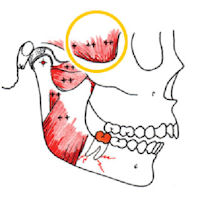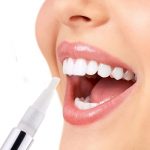Occlusal Guard (Night Guard)
An occlusal guard or (occlusal splint) is often included in the Treatment Plan of Patient who has needed restorative dental work. An occlusal guard will protect the restorations from clenching while the Patient sleeps while the Patient sleeps. These types of restorations may include; crowns, bridges, and veneers. Apart from restorative dental work, jaw muscles may feel tired or sore upon waking, which may mean that you are grinding or clenching while you sleep. Over time, grinding can wear away natural tooth enamel and destroy natural tooth structure, necessitating restorative treatment. During your next scheduled Hygiene appointment, ask Dr. Malcomson if an occlusal guard could help provide relief from night time grinding, bruxing and clenching. The most common type of occlusal splint is called a permissive splint. This is an appliance that may be fitted to either the upper or the lower teeth. The biting surface of a permissive splint is smooth and fairly flat. When the jaw closes, it can slide freely against the flat surface, leaving jaw muscles to move free of any deflective tooth inclines that can interfere with peaceful muscle activity. Patients who have a poor bite relationship; the jaw joints (TMJs) may have to be displaced from their sockets to make the teeth fit together when the jaw closes. Jaw muscles that have to hold the joints out of position every time the teeth come together, get tired and may become painful. A permissive splint is just a way of correcting the bad bite in a reversible manner, by covering up the deflective inclines on the teeth with a plastic material. The purpose is to create a new temporary bite surface that is in harmony with the jaw joints.  Sometimes the jaw muscles become so fatigued from trying to avoid a sore tooth, the muscles may go into spasm. An occlusal splint that separates the back teeth, but allows only the front teeth to contact a smooth flat surface, provides quick relief as the muscles are free to seat the jaw joints in their sockets without interference from the bite disharmony. If there are no structured disorders in the joints, the sore muscles become comfortable, usually within hours or, at most, two to three days, at which time the comfortable jaw to jaw relationship can be ascertained and the bite can be corrected.
Sometimes the jaw muscles become so fatigued from trying to avoid a sore tooth, the muscles may go into spasm. An occlusal splint that separates the back teeth, but allows only the front teeth to contact a smooth flat surface, provides quick relief as the muscles are free to seat the jaw joints in their sockets without interference from the bite disharmony. If there are no structured disorders in the joints, the sore muscles become comfortable, usually within hours or, at most, two to three days, at which time the comfortable jaw to jaw relationship can be ascertained and the bite can be corrected.
Athletic Mouthguard
Athletic mouthguards are often a mandatory piece of an athlete’s sports equipment in most competitive and school leagues. A direct blow to the face by a stick or ball may not only damage teeth, jaw, or a fixed orthodontic appliance, it can also cause long-term oral health issues. A mouthguard acts as barrier between orthodontia (braces), the cheek or lips; often reducing the risk of hard and soft tissue injuries – maybe even a concussion! Mouthguards can be used for many of different activities from swimming to sports such as boxing. They are usually made of safe materials that do not cause allergic reactions but the biggest concern is how well they are made and how well they protect the user’s teeth. A customized athletic mouthguard will often reduce the risk of oral injury – up to 99%. The best athletic mouthguard is one that has been custom made for your sport and your teeth, by a Dentist. A mouthguard purchased from a sports store requires the athlete to clench their teeth for optimal protection while playing.





